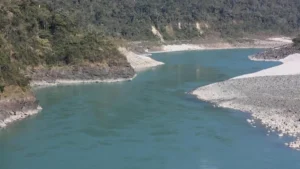Straits are narrow passages of water that connect two larger bodies of water, playing a vital role in maritime navigation and trade. These waterways can significantly impact local ecosystems and economies, making them essential for international shipping routes. One of the most famous straits is the Strait of Malacca, recognized as the longest strait in the world.
Longest Strait in the World
The Strait of Malacca, at approximately 800 kilometers (500 miles) long, is the longest strait in the world. It connects the Indian Ocean to the Pacific Ocean, serving as a vital shipping route for international trade, with over 94,000 vessels passing through annually.
Location of Strait of Malacca, World’s Longest Strait
The Strait of Malacca is situated between the Malay Peninsula to the northeast and the Indonesian island of Sumatra to the southwest. This narrow passage plays a crucial role in facilitating international trade between major Asian economies, including India, Thailand, Indonesia, Malaysia, the Philippines, Singapore, Vietnam, China, Japan, Taiwan, and South Korea.
Length of Strait of Malacca
The Strait stretches approximately 800 kilometers (500 miles) in length. Its width varies, ranging from 65 to 250 kilometers (40–155 miles), making it one of the longest straits globally. The International Hydrographic Organization outlines specific geographical coordinates that define the strait’s limits, ensuring its recognition as a significant maritime feature.
Importance of Strait of Malacca
The Strait of Malacca serves as the primary shipping channel between the Indian Ocean and the Pacific Ocean. It is part of the Maritime Silk Road, which links trade routes from the Chinese coast to the Mediterranean. Over 94,000 vessels navigate through this strait annually, accounting for about 25% of the world’s traded goods, including oil, manufactured products, coal, and agricultural commodities. Notably, nearly a quarter of all oil transported by sea passes through the strait, with millions of barrels shipped daily.
Shipping Hazards
Despite its significance, the Strait of Malacca poses various shipping hazards. Piracy has historically plagued the area, although recent years have seen a decline in attacks due to increased naval patrols. Additionally, the strait’s narrowness and shallow depths create collision hazards, with several shipwrecks reported over the years. Annual haze from wildfires in Sumatra further complicates navigation, reducing visibility and forcing vessels to slow down.
Proposals for Alternative Routes
Given the increasing congestion in the Strait of Malacca, proposals have emerged to relieve some of the traffic. One such proposal involves constructing a canal through the Isthmus of Kra in Thailand, potentially shortening the route between the Indian and Pacific Oceans by approximately 960 kilometers (600 miles). However, financial and ecological challenges have hindered progress on this plan. Additionally, alternatives like pipelines have been suggested to transport oil across the isthmus, reducing transportation costs.




 Which Glacier is the Source of the Brahm...
Which Glacier is the Source of the Brahm...
 Which City of Germany is Known as the Gr...
Which City of Germany is Known as the Gr...
 Which Peak is Known as the Five Treasure...
Which Peak is Known as the Five Treasure...







